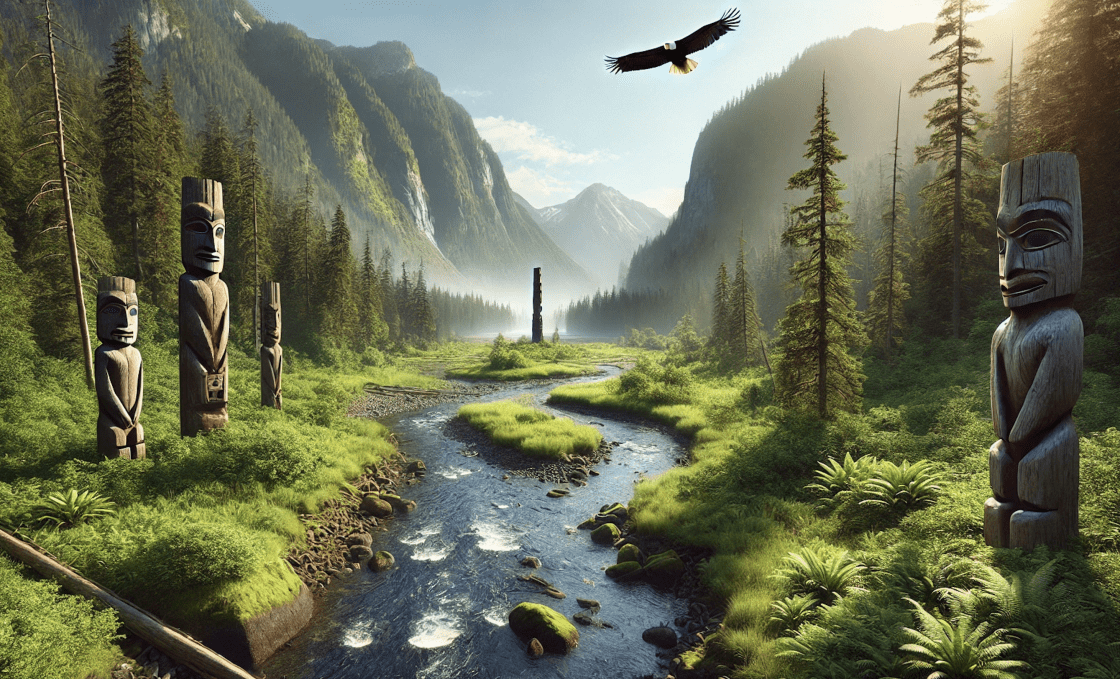British Columbia is home to an extraordinary cultural and environmental legacy shaped by the First Nations people, who have lived on and stewarded these lands for thousands of years—long before European settlers arrived. These Indigenous communities hold deep connections to the region’s rivers, mountains, forests, and seas. Today, this rich heritage is recognized through the United Nations Declaration on the Rights of Indigenous Peoples (UNDRIP), which has reshaped the governance, land management, and social fabric of British Columbia. UNDRIP offers a transformative framework for reconciliation and governance, designed to address historical injustices and secure a future that honours Indigenous rights and promotes sustainable development.
What is UNDRIP
UNDRIP, adopted by the United Nations in 2007, is a landmark international agreement that sets a global standard for the protection of Indigenous peoples’ rights. It recognizes the long history of marginalization faced by Indigenous communities and aims to ensure their rights to self-determination, land, culture, and governance are respected and upheld. The declaration addresses a broad range of rights, from cultural preservation to political participation, and emphasizes the need for Indigenous peoples to be central participants in decisions affecting their lands and resources.
Key components of UNDRIP include:
- Right to Self-Determination: Indigenous peoples have the right to freely determine their political status and pursue their economic, social, and cultural development.
- Ownership and Control Over Land and Resources: Indigenous communities must have the authority to manage and control lands they have traditionally owned or occupied.
- Free, Prior, and Informed Consent: States must obtain the consent of Indigenous peoples before implementing any projects or laws that affect their lands, resources, or rights.
- Protection of Cultural Heritage: Indigenous groups have the right to preserve their cultural traditions, languages, and spiritual practices, ensuring their heritage is passed on to future generations.
- Participation in Decision-Making: Indigenous peoples should have a seat at the table when decisions are made about matters that impact their communities and way of life.
These rights, while not legally binding under international law, serve as a powerful moral and political framework for addressing long-standing inequalities.
British Columbia’s Groundbreaking Adoption of UNDRIP
In 2019, British Columbia became the first jurisdiction in the world to embed UNDRIP into provincial law through the Declaration on the Rights of Indigenous Peoples Act (DRIPA). This landmark legislation requires the province to align its laws with the principles of UNDRIP and to engage with First Nations in the governance of land and resource management. It represents a fundamental shift in how the province addresses Indigenous rights, moving from a system of colonial governance to one of shared decision-making and respect for Indigenous sovereignty.
This new legal framework compels the provincial government to consult and cooperate with First Nations on issues related to land, environment, and development. It formalizes Indigenous peoples’ role as key stakeholders and ensures that their voices are heard when it comes to decisions affecting their communities. The law also mandates the creation of an action plan and regular reporting to monitor progress in aligning provincial laws with UNDRIP.
The Profound Impact on Land and Resource Management
British Columbia’s natural landscape has long been a battleground for competing interests—industrial development, environmental conservation, and Indigenous stewardship. Historically, land was seized from First Nations without treaties or consent, leading to the exploitation of resources for industries like logging, mining, and fisheries. UNDRIP changes the dynamics of this relationship by requiring that Indigenous peoples have a central role in managing their ancestral lands and resources.
Under the UNDRIP framework, First Nations must be consulted before any major project can proceed on their traditional territories. This “free, prior, and informed consent” principle means that Indigenous communities are now partners in shaping the future of land use and resource extraction in the province. Projects such as the expansion of the Klinse-Za conservation area, co-managed by two First Nations, and the establishment of the Great Bear Sea initiative—a marine protected area involving 17 coastal First Nations—highlight how UNDRIP is changing the landscape of land management in British Columbia.
The co-management of land and resources also aligns with Indigenous values of sustainability and environmental protection, as Indigenous stewardship has long prioritized the health of ecosystems and wildlife. With UNDRIP, British Columbia is moving towards a governance model that integrates Indigenous knowledge into conservation efforts, promoting sustainable land use while addressing the environmental crises of deforestation, biodiversity loss, and climate change.
Economic Development and Indigenous Participation
The economic impact of UNDRIP on British Columbia is significant. Resource extraction industries, long a cornerstone of the province’s economy, must now work in partnership with First Nations. This shift from exclusion to inclusion in economic decision-making offers opportunities for Indigenous communities to benefit from the natural resources on their lands, while ensuring that development aligns with their cultural and environmental values.
Indigenous-led enterprises are becoming more prominent, with joint ventures and partnerships between First Nations, government, and industry paving the way for inclusive economic growth. Businesses operating in British Columbia are required to navigate new legal and ethical frameworks that prioritize Indigenous rights. This can mean adapting development projects to ensure they are in line with environmental sustainability and Indigenous stewardship. The province’s economic future, particularly in sectors like forestry, mining, and energy, will increasingly depend on these collaborations, ensuring that Indigenous peoples are active participants and beneficiaries of economic development.
Governance and Legal Reforms
The incorporation of UNDRIP into provincial law is reshaping governance in British Columbia. The provincial government is tasked with aligning its laws with the principles of the declaration, a complex and ongoing process that touches every aspect of governance, from environmental policy to social services. The Declaration Act Secretariat was established to oversee this alignment, guiding the province as it adapts its legislative framework to respect Indigenous rights.
This new governance model emphasizes collaboration between Indigenous and non-Indigenous governments. Decisions that once excluded First Nations now require their input, and laws that ignored Indigenous rights must be reformed. The legal recognition of Indigenous land title, affirmed through numerous Supreme Court decisions, is now reinforced by the principles of UNDRIP, ensuring that First Nations have a voice in all decisions that impact their lands and communities.
The introduction of UNDRIP also has broader implications for legal processes in British Columbia. It sets a precedent for the resolution of land disputes and offers a framework for negotiating agreements between the province and Indigenous nations. This shift in governance requires careful navigation, but it holds the potential to create a more equitable legal system that acknowledges the unique status of Indigenous peoples.
Social and Cultural Transformation
Beyond the legal and economic changes, UNDRIP’s implementation in British Columbia fosters a deeper cultural and social transformation. It empowers Indigenous peoples to reclaim their cultural practices, languages, and traditions. The declaration affirms their right to cultural preservation, which is critical in reversing the long history of assimilation policies that have sought to erase Indigenous identities.
With the recognition of their rights, Indigenous communities are better positioned to revive their languages, protect sacred sites, and pass their cultural heritage on to future generations. The integration of Indigenous knowledge into educational curricula and public life contributes to a broader understanding and appreciation of Indigenous history, values, and contributions to society.
This cultural revitalization, coupled with the formal recognition of Indigenous governance and land rights, is reshaping the social fabric of British Columbia. As Indigenous voices are more fully integrated into public discourse, the province is evolving towards a society that values inclusion, respect, and shared responsibility for the land and its people.
A New Path for British Columbia
The adoption of UNDRIP in British Columbia marks a significant turning point in the province’s history. By recognizing the rights of Indigenous peoples, the province is moving towards a more just and equitable future, one that acknowledges the profound connection between First Nations and their ancestral lands. The implementation of UNDRIP reshapes governance, land management, and economic development, placing Indigenous peoples at the heart of decision-making processes.
While challenges remain, particularly in reconciling historical injustices and aligning laws with Indigenous rights, British Columbia’s commitment to UNDRIP offers a blueprint for a more inclusive and sustainable future. As the province navigates this new path, the legacy of colonization is being dismantled, replaced by a governance model that honours the deep-rooted knowledge and stewardship of First Nations. This transformation is not just about rectifying the past; it is about building a future where Indigenous and non-Indigenous communities can thrive together, united by a shared commitment to justice, sustainability, and respect for the land.
UNDRIP BC Resources
University of British Columbia
Indigenous Foundations at UBC
Destination British Columbia
Union of BC Indian Chiefs
Government of British Columbia
Government of Canada
Legislative Assembly of BC
The Fraser Institute
BC Human Rights Tribunal
BC Assembly of First Nations
Canada Assembly of First Nations
Indigenous Tourism BC
Office of Human Rights
Human Rights Museum
Trade and Invest in BC
Canadian Encyclopedia
Crown Indigenous Relations
British Columbia Law Institute (PDF)
United Nations Declaration (PDF)


